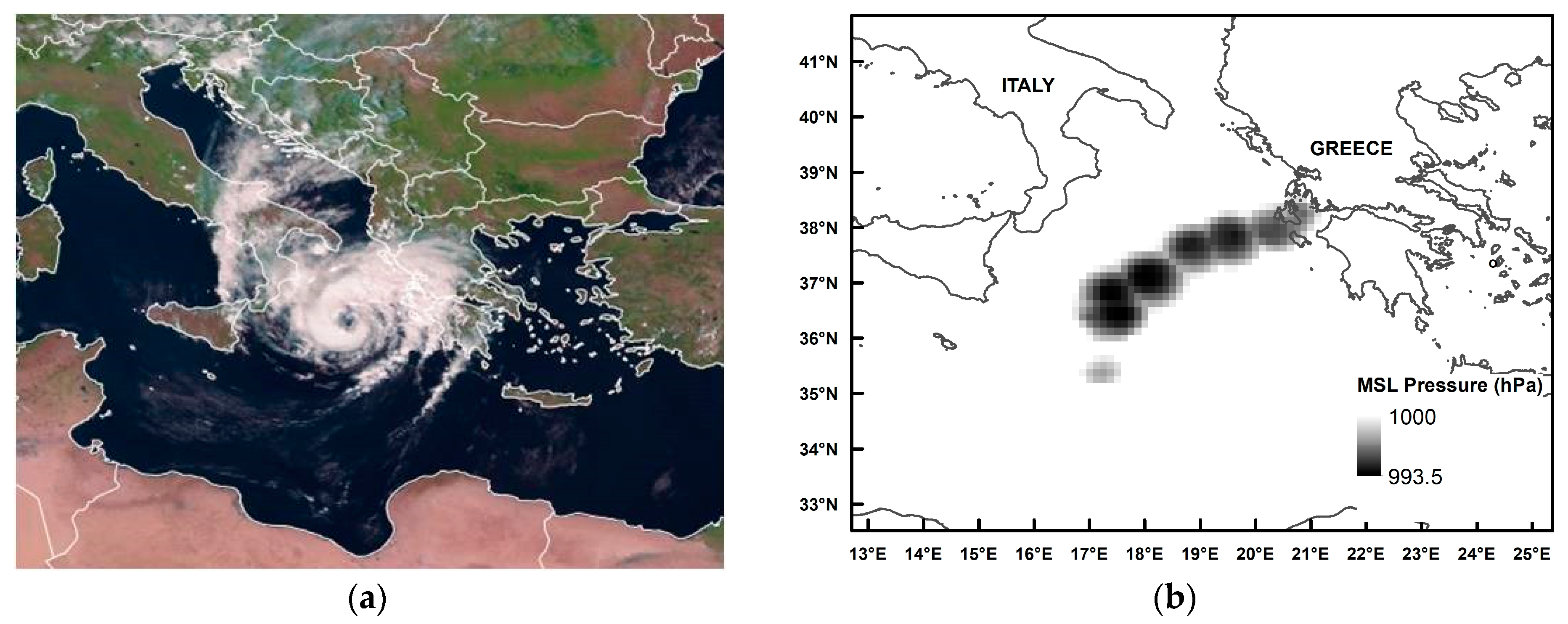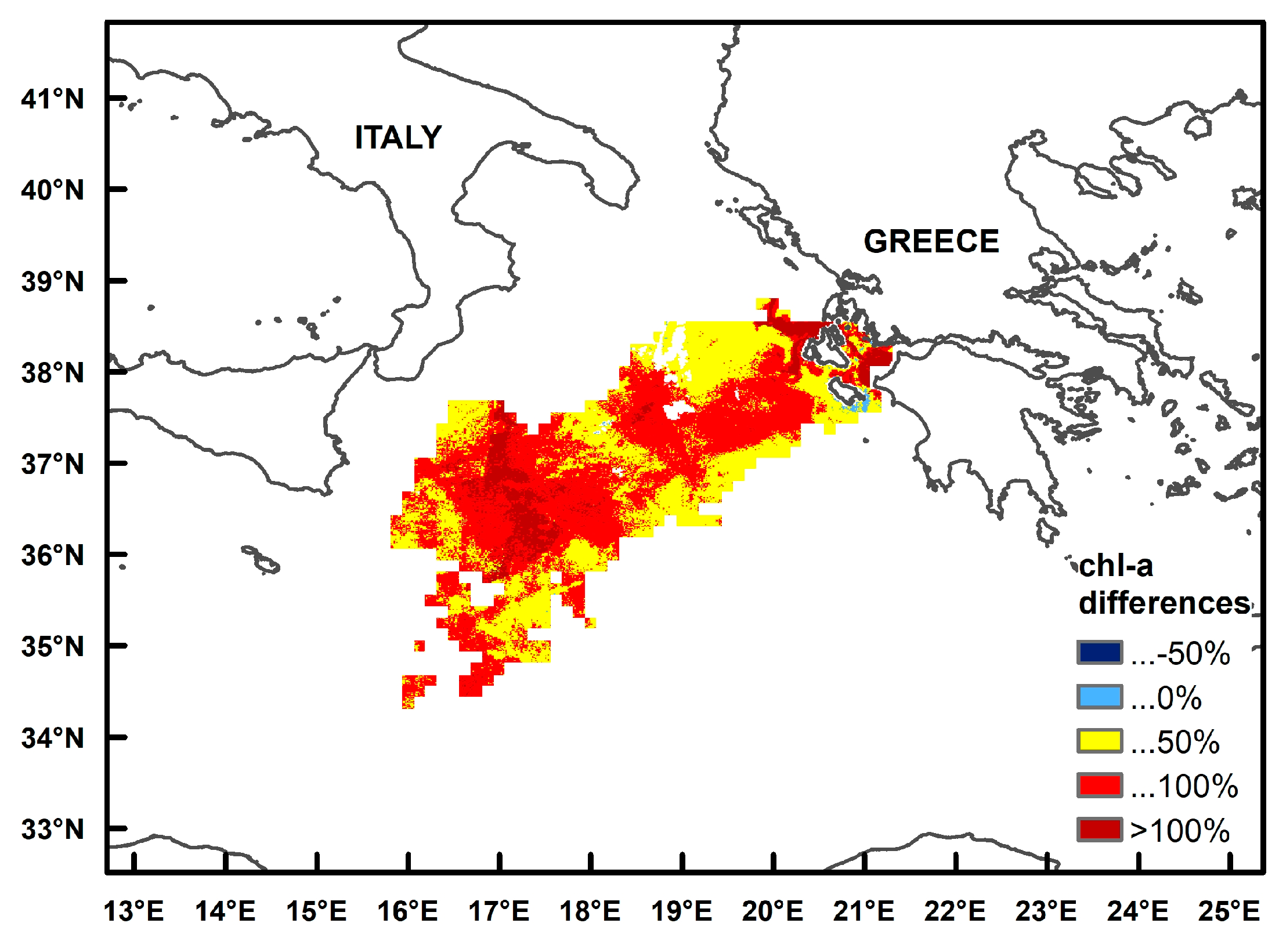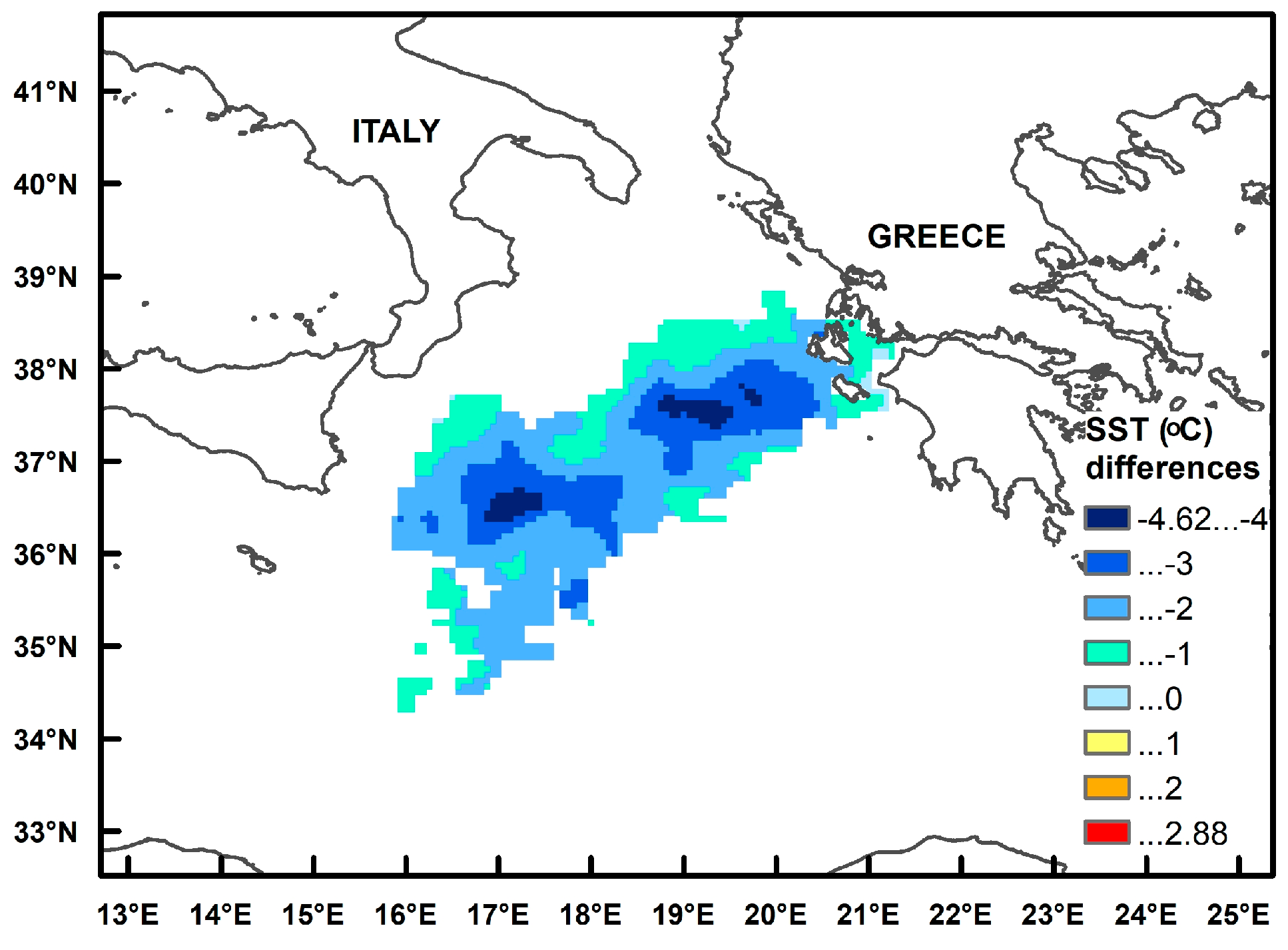Extreme Weather Affecting Sea Chlorophyll: The Case of a Medicane †
Abstract
:1. Introduction
2. Materials and Methods
3. Results and Discussion
4. Conclusions
Funding
Institutional Review Board Statement
Informed Consent Statement
Data Availability Statement
Acknowledgments
Conflicts of Interest
References
- Babin, S.M.; Carton, J.A.; Dickey, T.D.; Wiggert, J.D. Satellite evidence of hurricane-induced phytoplankton blooms in an oceanic desert. J. Geophys. Res. 2004, 109, C03043. [Google Scholar] [CrossRef]
- Emanuel, K. Genesis and maintenance of “Mediterranean hurricanes”. Adv. Geosci. 2005, 2, 217–220. [Google Scholar] [CrossRef]
- Nastos, P.T.; Karavana Papadimou, K.; Matsangouras, I.T. Mediterranean tropical-like cyclones: Impacts and composite daily means and anomalies of synoptic patterns. Atmos. Res. 2018, 208, 156–166. [Google Scholar] [CrossRef]
- Kotta, D.; Kitsiou, D. Medicanes Triggering Chlorophyll Increase. J. Mar. Sci. Eng. 2019, 7, 75. [Google Scholar] [CrossRef]
- D’Ortenzio, F.; Ribera D’Alcalà, M. On the trophic regimes of the Mediterranean Sea: A satellite analysis. Biogeosciences 2009, 6, 139–148. [Google Scholar] [CrossRef]
- Wu, Y.; Platt, T.; Tang, C.C.L.; Sathyendranath, S. Short-term changes in chlorophyll distribution in response to a moving storm: A modelling study. Mar. Ecol. Prog. Ser. 2007, 335, 57–68. [Google Scholar] [CrossRef]
- Houpert, L.; Testor, P.; Durrieu de Madron, X.; Somot, S.; D’Ortenzio, F.; Estournel, C.; Lavigne, H. Seasonal cycle of the mixed layer, the seasonal thermocline and the upper-ocean heat storage rate in the Mediterranean Sea derived from observations. Prog. Oceanogr. 2015, 132, 333–352. [Google Scholar] [CrossRef]




Disclaimer/Publisher’s Note: The statements, opinions and data contained in all publications are solely those of the individual author(s) and contributor(s) and not of MDPI and/or the editor(s). MDPI and/or the editor(s) disclaim responsibility for any injury to people or property resulting from any ideas, methods, instructions or products referred to in the content. |
© 2023 by the author. Licensee MDPI, Basel, Switzerland. This article is an open access article distributed under the terms and conditions of the Creative Commons Attribution (CC BY) license (https://creativecommons.org/licenses/by/4.0/).
Share and Cite
Kotta, D. Extreme Weather Affecting Sea Chlorophyll: The Case of a Medicane. Environ. Sci. Proc. 2023, 26, 192. https://doi.org/10.3390/environsciproc2023026192
Kotta D. Extreme Weather Affecting Sea Chlorophyll: The Case of a Medicane. Environmental Sciences Proceedings. 2023; 26(1):192. https://doi.org/10.3390/environsciproc2023026192
Chicago/Turabian StyleKotta, Dionysia. 2023. "Extreme Weather Affecting Sea Chlorophyll: The Case of a Medicane" Environmental Sciences Proceedings 26, no. 1: 192. https://doi.org/10.3390/environsciproc2023026192
APA StyleKotta, D. (2023). Extreme Weather Affecting Sea Chlorophyll: The Case of a Medicane. Environmental Sciences Proceedings, 26(1), 192. https://doi.org/10.3390/environsciproc2023026192




